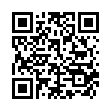|
This article is cited in 1 scientific paper (total in 1 paper)
Robotics, Automation and Control Systems
Automated search for locations of detention groups to reduce security activity risk
O. Pyankova, D. Smyshnikovb
a Voronezh Institute of the Ministry of Internal Affairs of Russia
b Security Company LLC "Cascade" (Moscow)
Abstract:
Property security management is a crucial problem in keeping tangible and intangible assets safe. Its solution using technical means and mobile detention groups ensures assets preservation and reduces security activities risk. Classical definition of a risk, which relates the probability of damage to the protected object to the amount of damage, is proposed to use. For determining the probability, an assumption, where only arrival time of the detention group at secured facility is recorded by the alarm signal, is introduced.
In order to minimize the total risk of security activities the task of finding the location of the detention group on the ground with dispersed objects is formulated. As a solution to the formulated problem, a search for the location of the detention groups which takes into account the magnitude of the damage and the current coordinates of the object on the plane is proposed. Examples of calculating locations of detention groups on the plane are presented.
An objective function $\Phi$ of the effectiveness of security activities implementation, linking the financial and economic indicators of security organization with the value of security activities risk is introduced and substantiated. The analysis of function $\Phi$ behavior with a change in the number of detention groups is shown, the presence of function extremum is shown, the interval of finding the extremum is determined.
It is proposed to calculate the distances between objects on a map and to use it to determine the coordinates in a new auxiliary plane. Coordinates are calculated using Gram matrices. A computational example is presented.
A step-by-step algorithm for secured facility allocation between detention groups with minimization of the total risk of security activities is developed; an example of its use is presented.
A search procedure for the location of the detention group on the ground by the determined coordinates on the plane is defined; a search process is illustrated. A general location search algorithm is proposed and the results are presented.
Keywords:
security risk, optimization of the placement of detention groups, gram matrix, determination of coordinates, distance matrix.
Received: 07.02.2020
Citation:
O. Pyankov, D. Smyshnikov, “Automated search for locations of detention groups to reduce security activity risk”, Tr. SPIIRAN, 19:3 (2020), 594–620
Linking options:
https://www.mathnet.ru/eng/trspy1110 https://www.mathnet.ru/eng/trspy/v19/i3/p594
|

| Statistics & downloads: |
| Abstract page: | 65 | | Full-text PDF : | 41 |
|




 Contact us:
Contact us: Terms of Use
Terms of Use
 Registration to the website
Registration to the website Logotypes
Logotypes








 Citation in format
Citation in format 
